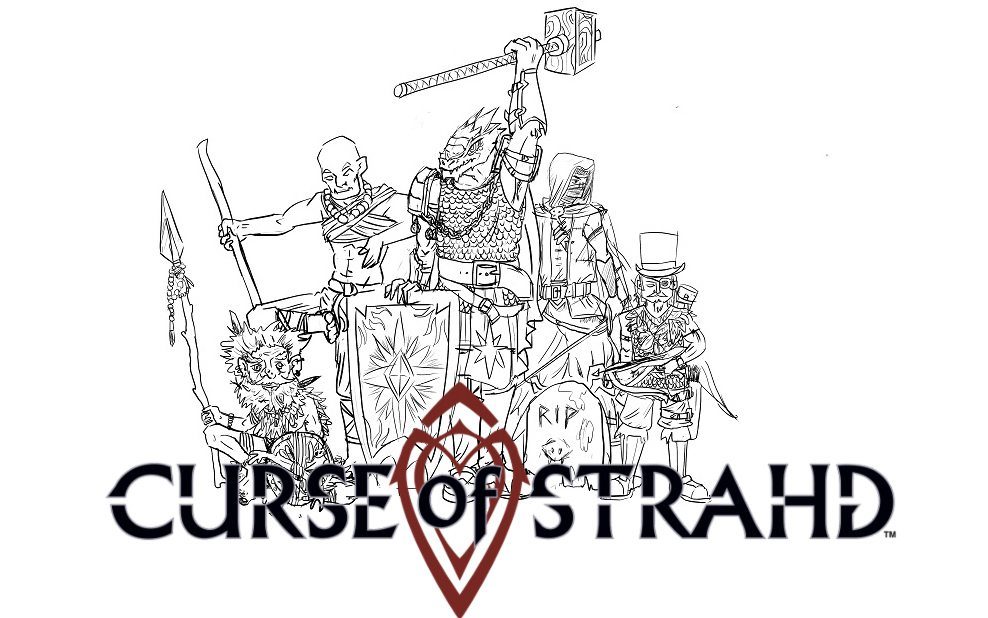Track down an elusive spy and gather evidence—but be careful that you don’t fall into a trap yourself!
What Is Harsh Shadows?
Harsh Shadows is a card game for 1 player, ages 8 and up, and takes about 20 to 30 minutes to play. It’s currently seeking funding on Kickstarter, with a pledge level of $12 plus shipping for a copy of the game, or $3 for the print and play version. The game has a spy-vs-agent theme but there’s nothing graphic: there are images of various types of evidence (including a gun and time bombs) but the action itself is somewhat abstracted.
Harsh Shadows was designed by Rachel Bruner and published by Wonderspell, with illustrations by Ben Flores.
New to Kickstarter? Check out our crowdfunding primer.
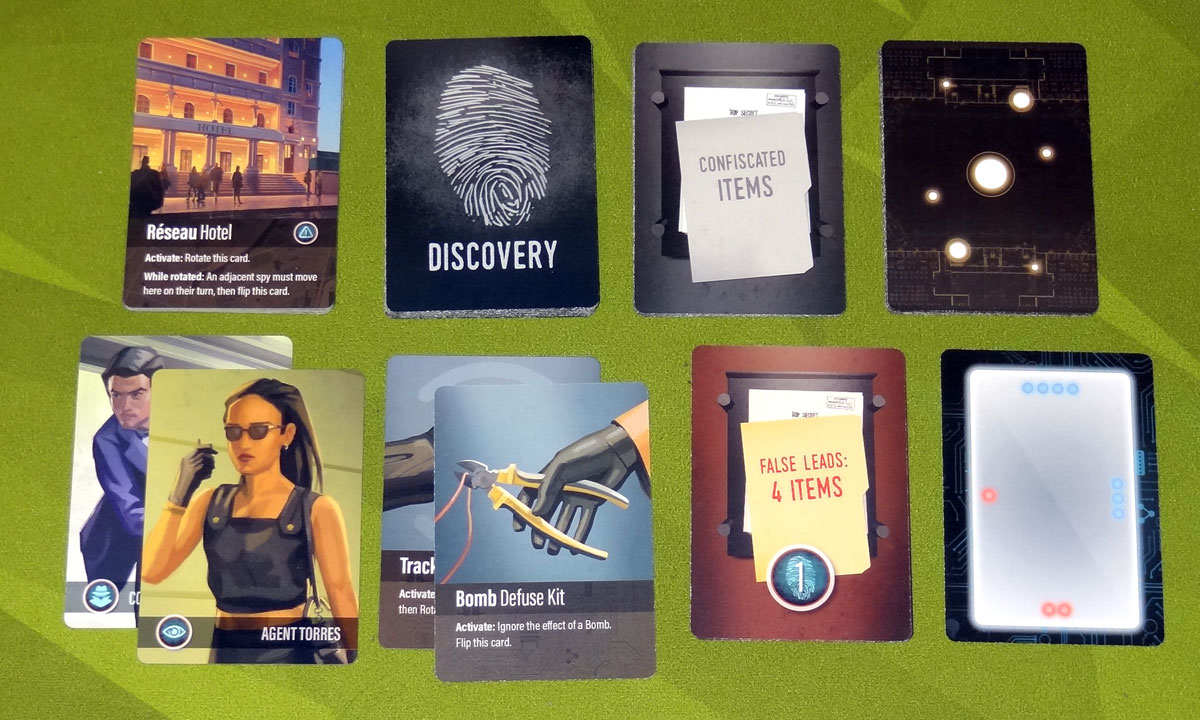
Harsh Shadows Components
Note: My review is based on a prototype copy, so it is subject to change and may not reflect final component quality.
The game is a deck of 54 cards:
- 9 Location cards
- 22 Discovery cards (Items, Clues, Bombs)
- 8 Confiscated Item cards
- 8 Spy Movement cards
- 2 Character cards (Spy and Agent)
- 2 Agent Tool cards (Tracking Bug and Bomb Defuse Kit)
- 3 Case File cards
- Countdown card

The Spy and Agent cards are double-sided so that you can choose a man or a woman for either role. The location cards are nicely illustrated and show places like a bus station, a bank, a cafe, and so on; they’re also double-sided: one side includes the name and the location’s effect, and the other side has the illustration only. The locations all look still—even where there are people in the scene, they look quiet and calm, with people unaware that there’s an intense cat-and-mouse chase going on just out of sight.
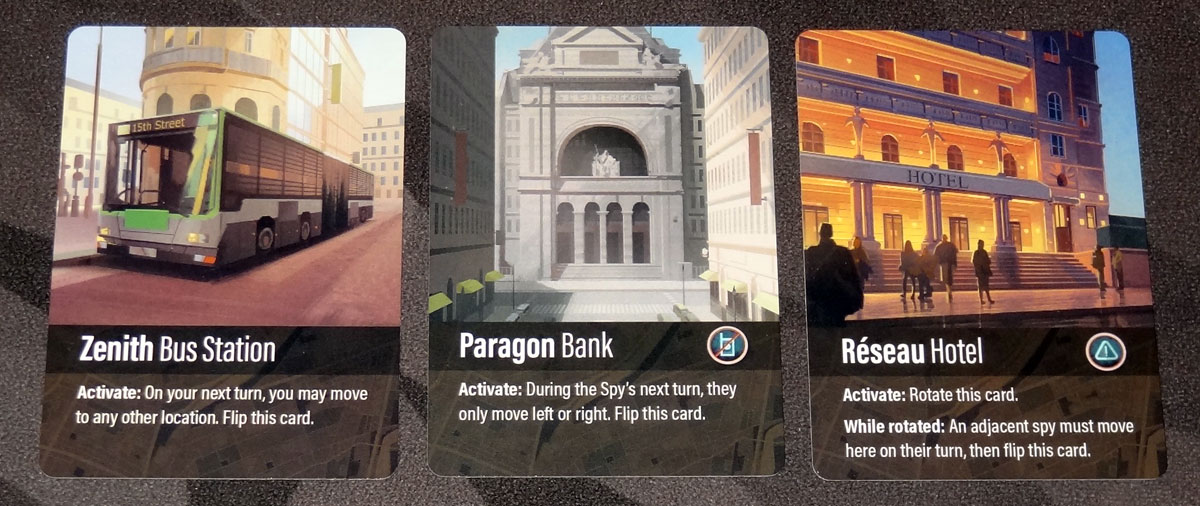
The items are various things that could be incriminating evidence: a phone, a laptop, a hidden camera, a pair of binoculars. They’re depicted on a wooden table, and these images kind of have the look of items in a videogame, a sort of 3D-rendered appearance. I’m not sure if these are final—they don’t quite match the painted look of the characters and location, though they work well enough.

How to Play Harsh Shadows
You can download a draft of the rulebook here.
The Goal
The goal of the game is to successfully apprehend the spy, using your tracking bug and the right pieces of evidence.
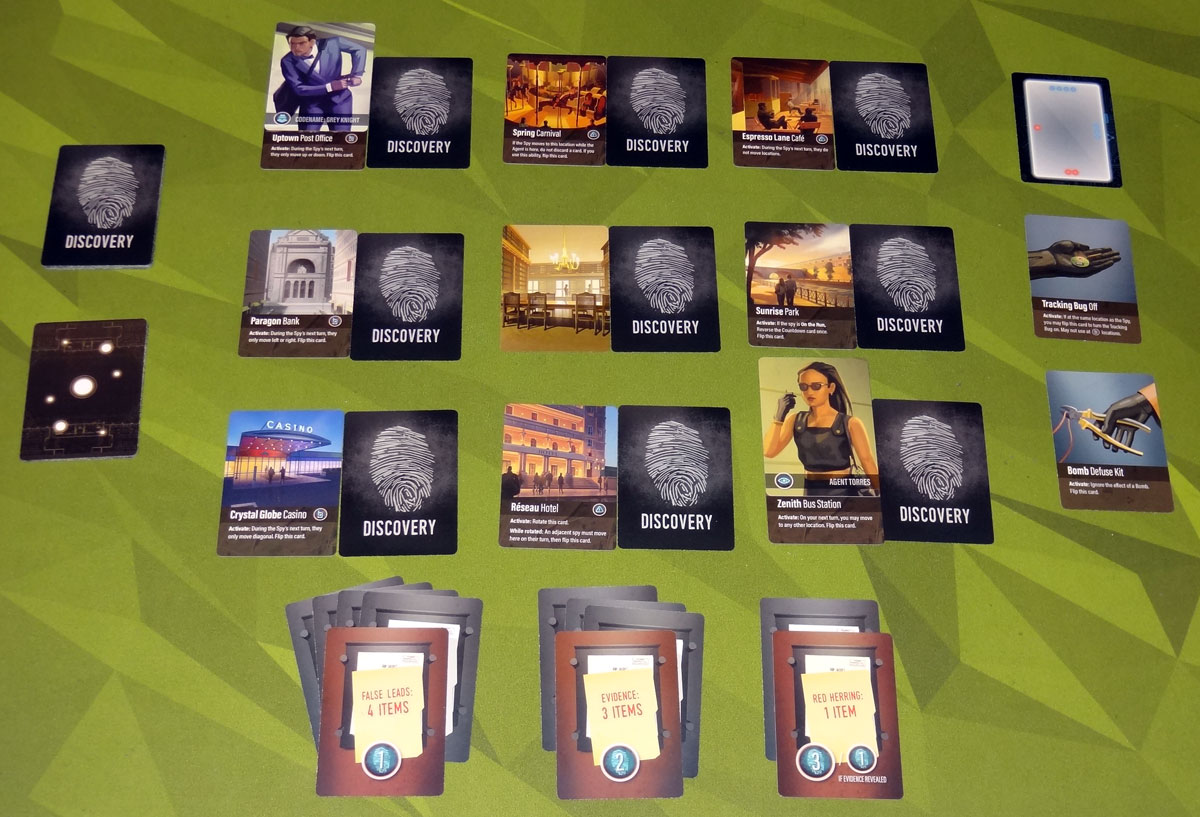
Setup
Shuffle the location cards and make a 3×3 grid, with enough space around them to place other cards in between. Turn the center card face-down (to the illustration-only side).
Take the discovery cards and set the 4 bomb cards aside. Shuffle 8 discovery cards with 1 bomb and place 1 card next to each location, face-down. Then shuffle the rest of the bombs into the discovery deck and place it nearby.
Place your case file cards (Evidence, Red Herring, and False Leads) in a row. Shuffle the confiscated item cards and deal them face-down next to each case file as listed on the cards. Set your tools and the countdown card nearby.
Place the Agent card on the bottom right location, and place the Spy card on the top left location.
Shuffle the spy movement deck, rotating about half of the cards 180 degrees.
Gameplay
During each turn, you move your agent, take optional actions, and then move the spy.
You may move one space in any direction (including diagonally), and then take the top discovery card from that location. If it’s an item or a clue (the fingerprint), then put it into your collection. If you move to the spy’s location or the spy moves to your location, you must discard a card from your collection (and this ends your turn).
If it’s a bomb, you must discard a card from your collection or flip over your bomb defuse kit if it’s still available. If you can’t do either of these, you lose. If you find a bomb, you do not get any additional actions.
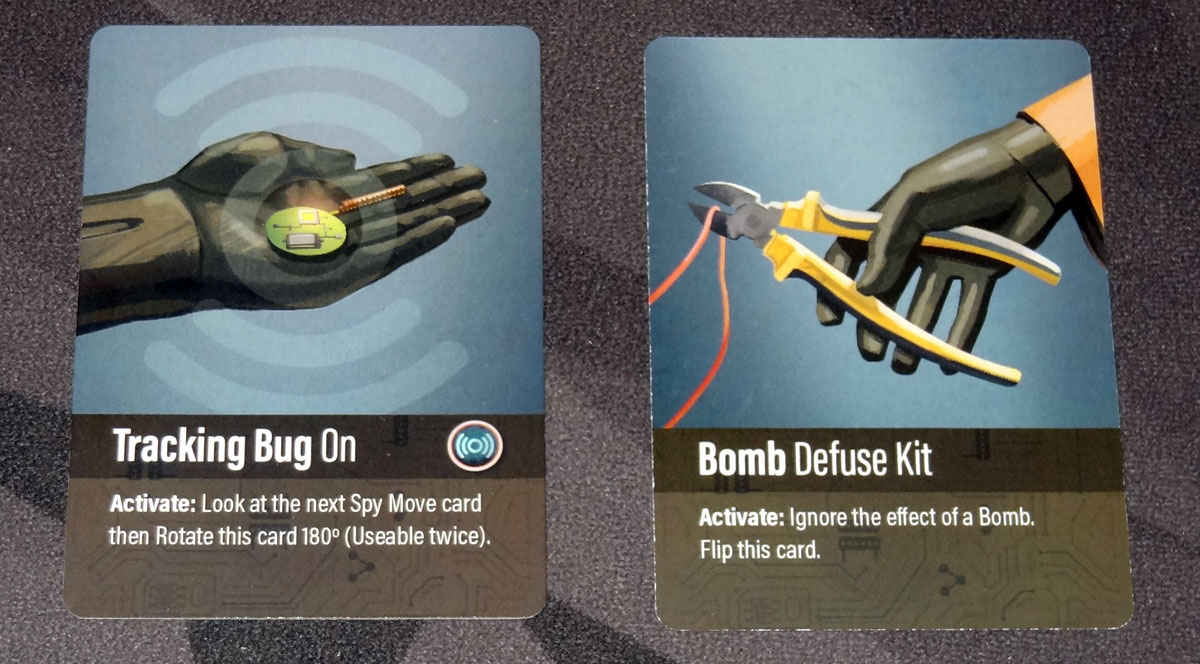
Additional actions include using clues, placing the tracking bug, tracking the spy, and using the location ability.
Clue cards may be used to reveal confiscated item cards once per turn: 2 clues for an evidence card, 3 clues for a red herring (or 1 if you have any evidence revealed already), and 1 clue for a false lead. The 8 confiscated item cards are the same as the items in the discovery deck, and show you what you will need to win: you must collect all 3 evidence, and you must not have the red herring. False leads do not affect the case.
You may place the tracking bug on your current location as long as it’s not one of the non-bug locations. It starts “off” but if the spy moves to that location, then you flip the card to the “on” side and place it near your collection.
To track the spy, the tracking bug must be “on.” Peek at the top card of the spy movement deck. You may use your tracking bug twice—the first time, rotate the card, and the second time, discard it.
If your location has an ability, you may use it. These may affect where the spy can move on its next turn, allow you to use fewer clues to reveal an item, or move you around.

After you’re done with your actions, flip the top card of the spy movement deck. Move the spy in the direction of the large arrow; if it cannot, then use the smaller arrow. If it still can’t move, rotate the card 180 degrees and use the large arrow. (Reshuffle the movement discard pile if needed.)
Place a new discovery card at that location (underneath any existing card); if there are already 2 cards then skip this.
If the discovery deck runs out, the spy is “On the Run.” Place the countdown card in play with the 4 dots at the top. Now, if the spy moves to a location without a discovery card, rotate the countdown card. If it reaches zero, you’ve run out of time.
Game End
To win the game, you must successfully bug the spy, and then confront the spy at a non-bug location. Move into the spy’s location—you do not discard a card as usual if you’re making an accusation. (You may also make an accusation if you start your turn in the spy’s location.)

Reveal all the evidence and red herring cards. If you have all 3 evidence items, and you do not have the red herring, then you’ve successfully apprehended the spy and you win! Otherwise, you lose.
You can also lose the game if you reveal a bomb or run into the spy and don’t have anything you can discard, or if time runs out before you catch the spy.
Adjusting Difficulty Level
You can make the game harder by removing the x2 clue card, or even harder by also playing with 2 red herrings and 3 false leads.
Why You Should Play Harsh Shadows
Harsh Shadows is the first title from a new publisher, Wonderspell, though co-founders Jason Greeno and Jason Tagmire both have experience in the tabletop industry already. For instance, they’re also the folks behind PNP Arcade, a site that has over 250 games that you can print out yourself, including many PNP versions of published games that we’ve reviewed here. Jason Tagmire is also behind Button Shy, which publishes those awesome wallet games.
Harsh Shadows is a solo game, which isn’t normally my thing (but is apparently becoming more so the longer we remain socially distanced). For me, that means it has a bit of the feel of a cooperative game, where you’re trying to solve a puzzle or complete a task before the game manages to defeat you. In this case, you’re trying to collect enough evidence in time while also figuring out which items you need and avoiding the spy.
There’s some luck involved: the discovery deck is a mix of mostly items and clues—if you get a lot of clues first, you can start figuring out which items you’ll need and which you can ignore. It’s important to determine the red herring so you can dump it before you confront the spy, but it’s cheaper to do so after you’ve revealed some evidence first. Of course, if you collect a lot of items first, then you might not have a clue (literally) what you should keep and what you should throw away if you happen to run into a bomb or the spy.
You know there’s only a single bomb in the first 9 cards, and you can use your bomb defuse kit if you happen to run into that—but there are three more bombs hidden in the deck, and how quickly you encounter them can be pretty random. It really helps to narrow down your evidence so that you can just discard false lead items when you’re threatened.

Figuring out how to spend those clues isn’t obvious, though. False leads are the cheapest at 1 clue each, evidence costs 2 each, and the red herring costs 3 (unless you’ve gotten evidence already). But if you’ve collected an item, you don’t know where to start looking for it. I usually start with evidence and then go after the red herring, but maybe it makes more sense to get several false leads, just so that I have a better idea of what I can throw away? Sometimes I’ve also avoided spending a clue just so I have another card I can discard if I hit a bomb—at least I know the clue isn’t something I need at the end of the game.
Another issue is avoiding the spy. You start at opposite corners, but the grid is small, especially with diagonal movements. If the spy moves to the center space, no location is safe. That’s why it’s nice to have the location abilities that limit how and where the spy can move, but each location ability can only be used once. You don’t want to use up all the location abilities too soon; on the other hand, that ability might save you from getting caught by the spy, forcing you to discard an item that might prove to be needed evidence. Location abilities could also help you catch up to the spy once you’re ready to apprehend them.
The spy movement cards are clever—the backs are symmetrical so they look the same no matter which way they’re rotated, so then the cards allow the spy to move in any direction. I like that there’s the secondary arrow in case the first direction is impossible, and if both are impossible then rotating the card is guaranteed to work. It makes the spy’s movements randomized and unpredictable, without needing anything too complex to track it.
You can win even if you never revealed all of the confiscated item cards—if you have the right evidence and no red herring, it doesn’t matter if you spent clues on those during the game. But it’s a total gamble, and generally not something you want to do unless the countdown is about to hit zero. I had one game where I didn’t manage to reveal all of the evidence cards until late in the game, at which point I realized I’d already discarded one of the cards I needed. I’ve also had a game where all of the items I found early were false leads, and the last evidence I needed was the last discovery card on the table—so then I ran out of time to catch the spy. And whether you’re certain about your evidence or not, pinning down the spy can be difficult because you must apprehend them in a non-bug location—either because they moved there themselves, or because you used a location ability to get them there.
Harsh Shadows is a cool game that does a lot with just cards. Since the cards are used as both the board and the moving tokens, it makes it easier to manufacture and brings down the cost. There’s a nice cat-and-mouse feel to it while you’re trying to gather evidence without running into the spy, but then the roles switch as you try to corner the spy so you can make your arrest! If you enjoy solo games and you like the spy-vs-spy theme, you should have a look!
For more information or to make a pledge, visit the Harsh Shadows Kickstarter page!
Click here to see all our tabletop game reviews.
![]() To subscribe to GeekDad’s tabletop gaming coverage, please copy this link and add it to your RSS reader.
To subscribe to GeekDad’s tabletop gaming coverage, please copy this link and add it to your RSS reader.
Disclosure: GeekDad received a prototype of this game for review purposes.




